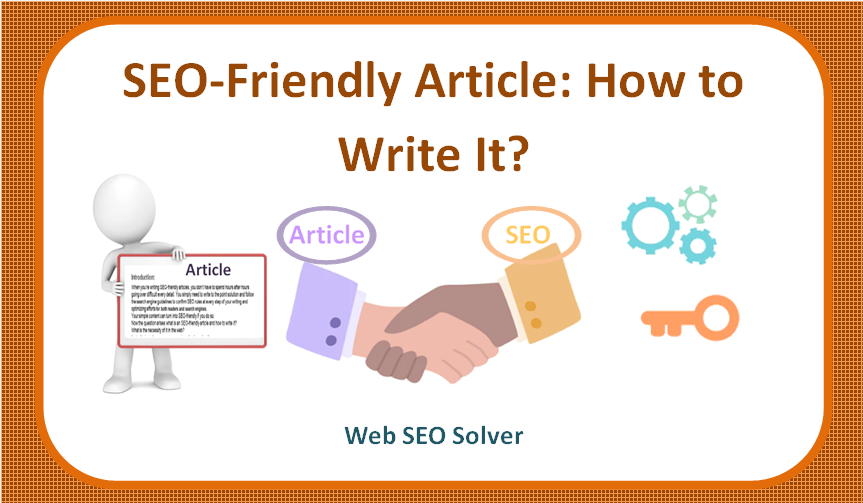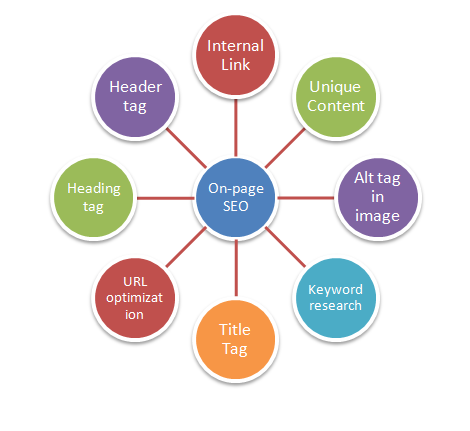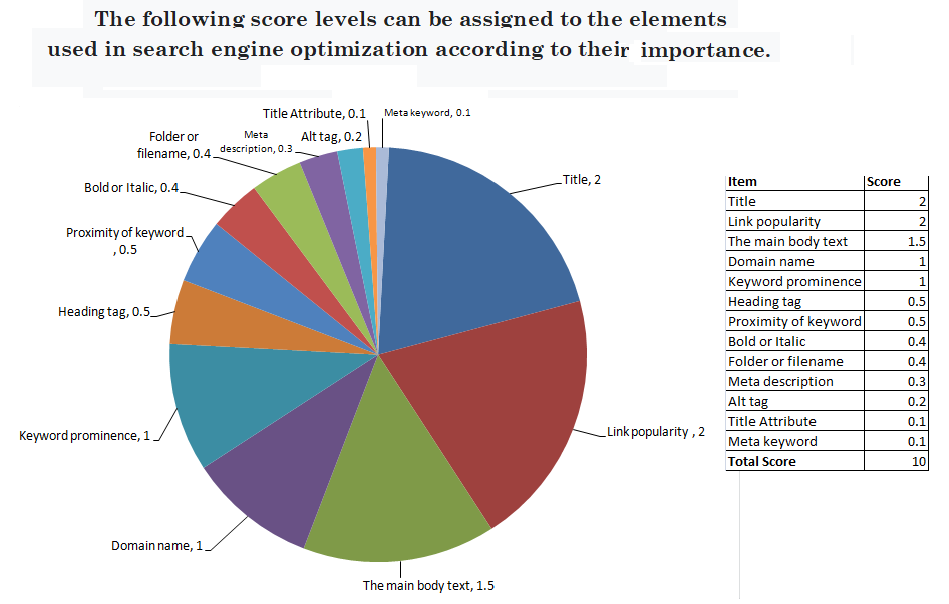
SEO-Friendly Article : How to Write It
When you’re writing SEO-friendly articles, you don’t have to spend hours after hours going over difficult every detail.
You simply need to write to the point solution and follow the search engine guidelines to confirm SEO rules at every step of your writing with optimizing efforts for both readers and search engines.
Your simple content can turn into SEO-friendly if you do so.
Now the question arises what is an SEO-friendly article and how to write it?
What is the necessity of it in the web?
Let’s dig into the matters to enter into the deep details.
Simply, an article that is written strictly following search engine guidelines is called SEO friendly article.
Such an article will definitely help the search engine to crawl, index, and ultimately rank it higher in the SERP.
Before starting to write such an SEO article about any topic you need to confirm two things.
1) An expert who knows the topic well.
2) An SEO expert who can perform the complete job of SEO with skill, care, and success.
These two experts can definitely present you an SEO- friendly article.
Table of Contents
How to Write SEO-Friendly Articles
SEO (Search Engine Optimization) is a term used to describe the process of improving the visibility of the web contents or web presence in the search results.
There are many techniques of optimization to improve SEO in an article.
One of the most common and effective techniques is on-page optimization.

You also need to improve the design, structure, and content of a website since they are a part of SEO.
However, the following 11 basic steps can help you to write an SEO-friendly article.
1. Use keyword-rich titles
2. Include keywords throughout your article
3. Use formatting that makes your article easy to read
4. Use images and videos that are relevant to your topic
5. Use keywords in your article’s URL
6. Write for a general audience, not just experts
7. Optimize the length of your article.
8. Use headings and subheadings to organize your article
9. Use lists to break up your text
10. Use quotes to illustrate your points11. Link to existing content.
11. Link to existing content.

Now, Let’s start with 11 basic steps that can help you to write an SEO-friendly article.
1. Use keyword-rich titles
Before starting to write an article, you need to collect a good number of potential keywords and related keywords for your content by doing proper keyword research.
Select the best title for the article that communicates directly with the whole content appropriately.
You can use title analyzer tools to measure the highest score.
Use exact match focusing keyword in your title.
Position your keyword early in the title and Keep your titles within 70 characters.
For example, instead of a title like: “9 Examples of Tasty Paleo Snacks” go with: “Paleo Snacks: 9 Tasty Examples”.
Avoid keyword stuffing in any part of your article including the title.
2. Include keywords throughout your article
Keep your keyword density low throughout your article. Keyword density is the percentage of keywords used in a given piece of text.
A high keyword density can lead to a website being penalized by Google for using too many keywords in a given article, and can make it more difficult for readers to find the information they’re looking for.
Always aim for a keyword density within 2.5% to 3.0% in your article. If the words in article are above 500, keep keyword density within 3% to 5%.
3. Use formatting that makes your article easy to read
When you are formatting your SEO-friendly article for online publication, there are a few things to keep in mind. Follow these tips and you should be on your way to producing an article that will help your site rank higher in search engines.
Keep your article “user-friendly”. This means that the formatting and layout should be easy to follow for readers, without any confusing or difficult-to-read elements. Use a simple, easy-to-read font, and keep paragraphs short and to the point.
Avoid using large blocks of text. Break up your article into shorter, easier-to-read sections.
4. Use images and videos that are relevant to your topic
There are a few things to keep in mind when using images and videos for your SEO-friendly article.
First, make sure the images and videos are appropriate for your article. For example, if your article is about cars, don’t use images of people.
Second, make sure the images and videos are high quality. This means that they are clear and sharp and have good lighting and color.
Third, make sure the images and videos are uploaded in the correct formats. For example, if you’re using a video, make sure it’s in a format that can be uploaded to your website, such as mp4 or av.
Optimize your image alt text with relevant keywords.
5. Use keywords in your article’s URL
When it comes to SEO, one of the most important things you can do is include keywords in your article’s URL. Search engines will index your article more quickly if the keywords are included in the URL.
Also, this will help your article rank higher in search engine results.
Additionally, people who are looking for information on a specific topic may click on your article if the keywords are included in the URL.
6. Write for a general audience, not just experts
When writing for a general audience, it is important to remember that not everyone is an expert. The key is to make your writing accessible and easy to understand, no matter who you are addressing. Remind 2 points while writing for the audience.
a. Make your writing concise.
When writing for a general audience, it is important to keep your writing concise. This means avoiding long paragraphs and instead breaking your content down into shorter, easier-to-read sections.
b. Use specific, concrete examples.
When writing for a general audience, it is important to use specific, concrete examples. This will make your writing more accessible and easier to understand.
7. Optimize the length of your article.
Google always loves long content because it can meet more keywords. By finding keywords Google can understand all about the content.
But, long articles can often scare the users away or mislead the writer from the main idea. Short and to-the-point article saves time and eases learning more than long content.
So, a proper balance in the length of article is essential to meet both the users and search engines.
The optimal length of the article is thought to be around 2,000–4,000 words maximum and about 350–5,00 words for an online blog is considered as a minimum level.
8. Use headings and subheadings to organize your article
To help your readers as well as search engines to easily find the information they are looking for, use headings to organize your article content.
1. Use headings to organize your article content by topic.
2. Use headings to help readers find information quickly.
3. Use headings to help readers navigate your article content.
4. Implements HTML headings (<H1> through <H3>) and only one <H1>
5. Use keywords in your headings. You should include your best keywords in the initial heading tag (<H1>). Using only one <H1> heading per page will strengthen your SEO.
9. Use lists to break up your text
When you are writing, it can be helpful to break up your text into smaller chunks. To do this, lists are a great way. Lists can help you to:
1. Keep your writing organized
2. Keep your audience engaged
3. Provide more detail
There are a few things to keep in mind when creating a list. First, make sure that your list is relevant to your topic. If your list is just for fun, make sure that it is also interesting and engaging. Second, make sure that each item in your list is a complete sentence. Third, make sure that your list is hierarchical.
10. Use quotes to illustrate your points
There is no one right way to use quotes in your writing. As long as you are clear about whom the quote is from and why it is being used, you are good to go. Here are a few tips for using quotes effectively in your writing:
1. When you are citing a quote, always include the author’s name and the date of the quote.
2. Always use MLA or APA style when quoting.
3. Use quotes to illustrate your points, not to replace them.
4. Use quotes to support your arguments, not to argue against them.
11. Link to existing content
In web technology, link is an essential element. By creating more internal links on your article, you can help your page/post to be crawled, indexed, and ranked higher in search engine results pages (SERPs). So, it is essential to optimize the internal links of your page well to boost SEO.
By following these 11 basic steps, you can successfully write SEO-friendly article.
Conclusion
SEO-friendly article is essential to promote any business or service because it helps search engines to crawl, index quickly and ultimately rank it high in the SERP.
By following only a few simple steps as mentioned above, you can certainly improve your post’s search engine ranking and increase your online visibility. Overall, these tips will help you write better SEO-friendly articles that can reach you a wider audience.
Related Term :
